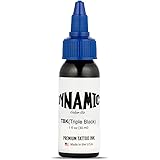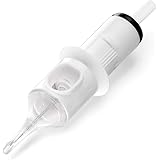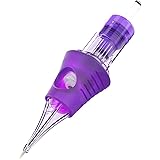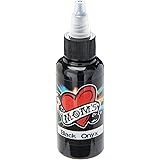The allure of temporary body art is undeniable, offering a flexible and commitment-free way to experiment with various designs and styles. Whether for a special event, a costume, or simply for momentary self-expression, fake tattoos have become a popular aesthetic choice. However, the transient nature of these adornments means that their removal is often desired as quickly as they were applied. While the video above might offer a visual demonstration of a rapid removal technique, a deeper understanding of the processes involved and the optimal strategies for efficient and skin-friendly fake tattoo removal is frequently sought.
Deconstructing the Adherence: Understanding Fake Tattoo Composition
To effectively remove a temporary tattoo, it is beneficial to comprehend its fundamental structure and the mechanisms by which it adheres to the skin. Typically, fake tattoos are comprised of three primary layers:
- The Design Layer: This is the visible image, printed with skin-safe, non-toxic inks.
- The Adhesive Layer: A crucial component, this layer is responsible for bonding the design to the epidermal surface. It is often a water-activated polymer or a similar compound designed for temporary adherence.
- The Backing Paper/Film: This protective layer holds the design and adhesive until application.
The primary challenge in quick tattoo removal lies in dissolving or mechanically disrupting this adhesive layer without causing irritation to the underlying skin. Many conventional methods, such as vigorous scrubbing with soap and water, prove ineffective because they do not adequately break down the specific type of adhesive utilized in temporary tattoos, leading to frustration and potential skin redness.
The Science of Dissolution: Effective Temporary Tattoo Removal
When seeking to remove a fake tattoo swiftly and safely, the principle of “like dissolves like” often proves highly effective. Given that the adhesives are typically formulated to be water-resistant, oil-based or alcohol-based solvents are frequently employed due to their chemical compatibility with the adhesive polymers. These substances work by breaking down the molecular bonds of the adhesive, allowing the tattoo to be gently lifted from the skin rather than abrasively scrubbed.
Various substances are recognized for their efficacy in this process:
- Oil-Based Solvents: These are generally considered gentler on the skin. Natural oils such as olive oil, coconut oil, baby oil, or even specialized makeup removers (which are often oil-based) are excellent choices. The lipids within these oils interact with the adhesive, causing it to loosen its grip on the skin. Application typically involves saturating the tattoo with oil for a few minutes, allowing the solvent action to commence, and then gently wiping or rubbing it away.
- Alcohol-Based Solvents: Substances like rubbing alcohol (isopropyl alcohol) or hand sanitizer, which contain a high percentage of alcohol, are potent solvents for many temporary tattoo adhesives. Alcohol acts quickly to denature the adhesive proteins and dissolve the ink. Care must be exercised when using alcohol, as excessive use can lead to skin dryness and irritation due to its dehydrating properties. A small amount applied to a cotton pad and gently rubbed over the tattoo is usually sufficient for quick tattoo removal.
- Acetone (Nail Polish Remover): While highly effective due to its strong solvent properties, acetone should be used with extreme caution and only on small areas if necessary. It is a very harsh chemical that can strip the skin of its natural oils, leading to significant dryness and irritation. Its use for fake tattoo removal is generally not recommended for sensitive skin or large areas.
Dermatological Considerations for Safe Tattoo Removal
While the objective is quick removal, the health and integrity of the skin must always be prioritized. The epidermal layer is a vital protective barrier, and harsh removal methods can compromise it, leading to irritation, redness, or even minor abrasions. Therefore, certain dermatological considerations should be integrated into the removal process.
Avoiding Skin Irritation and Damage
A common mistake observed during temporary tattoo removal is aggressive scrubbing. This mechanical force, particularly without adequate lubrication or solvent action, can cause micro-tears in the stratum corneum, the outermost layer of the epidermis. Such damage can lead to inflammation and increase susceptibility to environmental irritants.
Instead, a patient approach, allowing the chosen solvent sufficient time to work, is advised. After applying an oil- or alcohol-based solution, a gentle circular motion with a soft cloth or cotton pad is generally found to be more effective and less irritating than vigorous scrubbing. For more stubborn fake tattoos, a second application and waiting period can be utilized, rather than increasing friction.
Post-Removal Skin Care: Replenishing the Cutaneous Barrier
Following the successful removal of a temporary tattoo, it is imperative that appropriate aftercare be implemented to restore and protect the skin. Even the gentlest of solvents can temporarily disrupt the skin’s natural moisture balance. Therefore, rehydration is a critical step.
Application of a rich, emollient moisturizer is highly recommended. Ingredients such as ceramides, hyaluronic acid, and shea butter can help to replenish the skin’s lipid barrier and soothe any potential dryness or sensitivity. This proactive approach ensures that the skin remains supple and healthy, minimizing any adverse effects from the fake tattoo removal process.
Advanced Techniques and Specific Product Recommendations
For those seeking specialized approaches, some beauty brands offer dedicated temporary tattoo removal products. These formulations are often designed to be highly effective while incorporating skin-conditioning agents to mitigate dryness. Such products frequently contain a blend of mild solvents and moisturizers, providing a balanced approach to the quick removal of temporary body art.
Another technique that can be considered involves the use of adhesive tape. By firmly pressing a piece of strong adhesive tape (such as packing tape or medical tape) over the tattoo and then quickly peeling it away, portions of the tattoo and its adhesive can sometimes be lifted. This method is essentially a form of mechanical exfoliation and should be performed cautiously to avoid discomfort or skin stripping, especially on sensitive areas.
Ultimately, the objective of rapid fake tattoo removal is best achieved through a combination of understanding the underlying chemistry of the tattoo, selecting an appropriate solvent, and employing gentle, dermatologically sound techniques. By adhering to these principles, the temporary nature of fake tattoos can be fully embraced, allowing for quick changes and continued experimentation with body aesthetics, ensuring that the experience remains both enjoyable and kind to the skin. The effective removal of fake tattoos relies on these considerations for optimal results.











